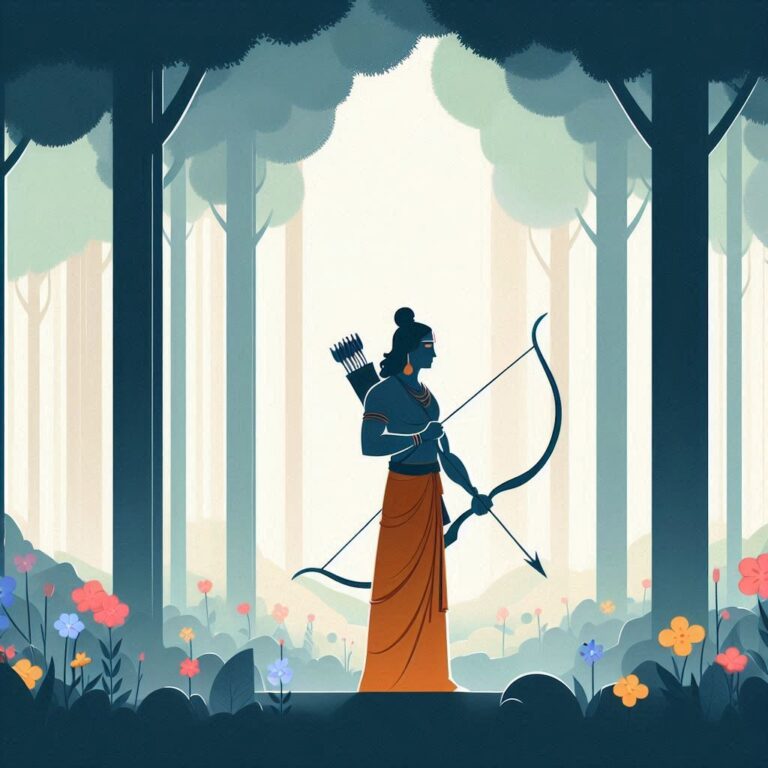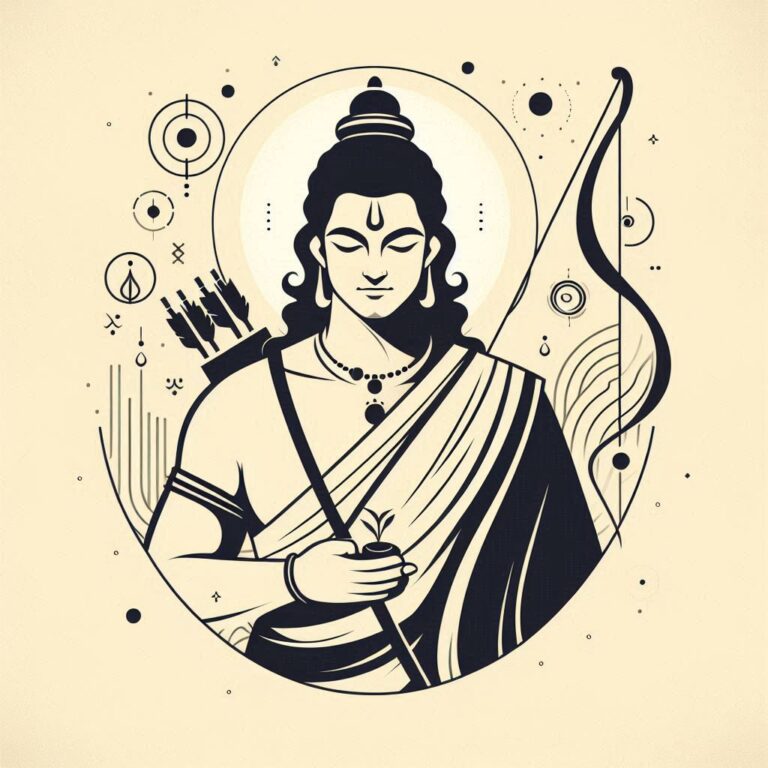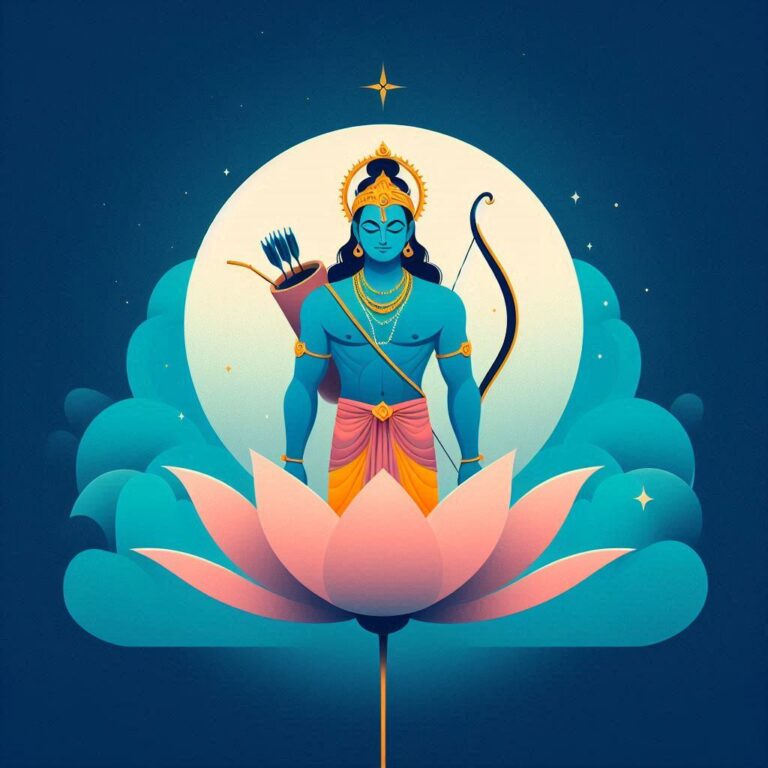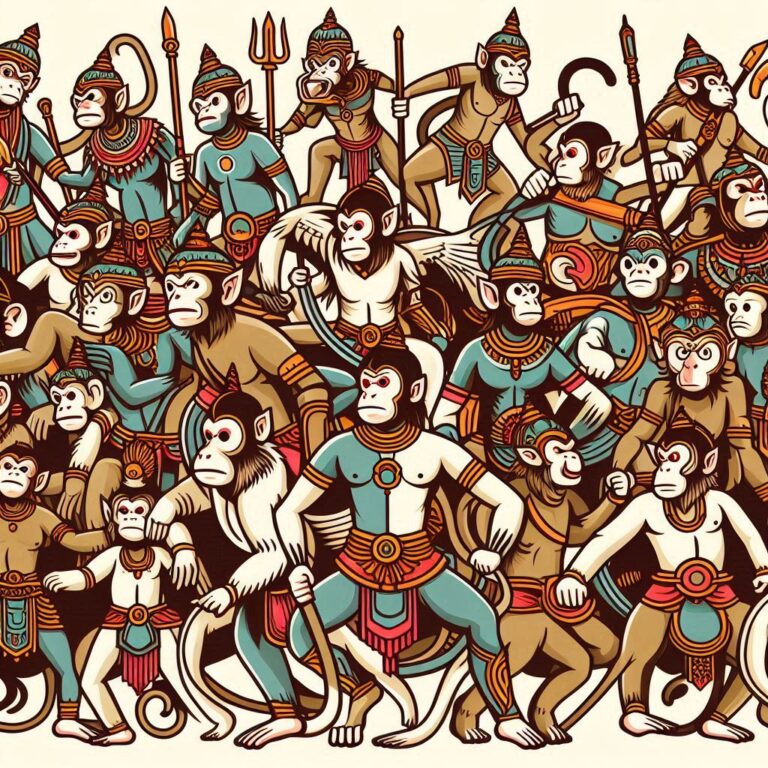The Kingdom of Mithila – The Setting of Sita’s Swayamvar
Mithila, a kingdom revered for its wisdom, culture, and prosperity, holds a special place in the hearts of those who study the Ramayan. Known as the land of scholars and saints, Mithila was ruled by the righteous King Janaka. The kingdom’s capital, Janakpur, was a hub of learning and spiritual enlightenment. It was in this fertile land that Sita, the divine daughter of Bhūmi (the Earth), was found by Janaka, and it was here that one of the most famous swayamvars in Indian history took place—the swayamvar of Sita.
The Great King Janaka
King Janaka, a philosopher-king, was renowned for his deep knowledge of dharma and his devotion to truth. Unlike many rulers who sought power and wealth, Janaka valued wisdom above all. His life was a testament to living righteously while fulfilling his royal duties. It was his responsibility to find a worthy husband for his daughter Sita, and for that, he devised a test that would reveal the inner and outer strength of her suitors.
Mithila: A Kingdom of Learning
Mithila was not just a political entity; it was a beacon of intellectual and spiritual prowess. Scholars from all corners of the land would visit to engage in philosophical discussions and learn from the sages who called Mithila home. The people of Mithila placed a high value on education and righteousness, making the kingdom one of the most respected realms of its time.
The Importance of the Swayamvar in Ancient India
In ancient India, the swayamvar was a unique practice that allowed a princess to choose her husband based on trials or tests of strength, wisdom, or valor. It was a way to ensure that the suitor was not only physically strong but also virtuous and worthy of marrying into the royal family. Swayamvars were often attended by princes from all across the land, making them grand and significant events.
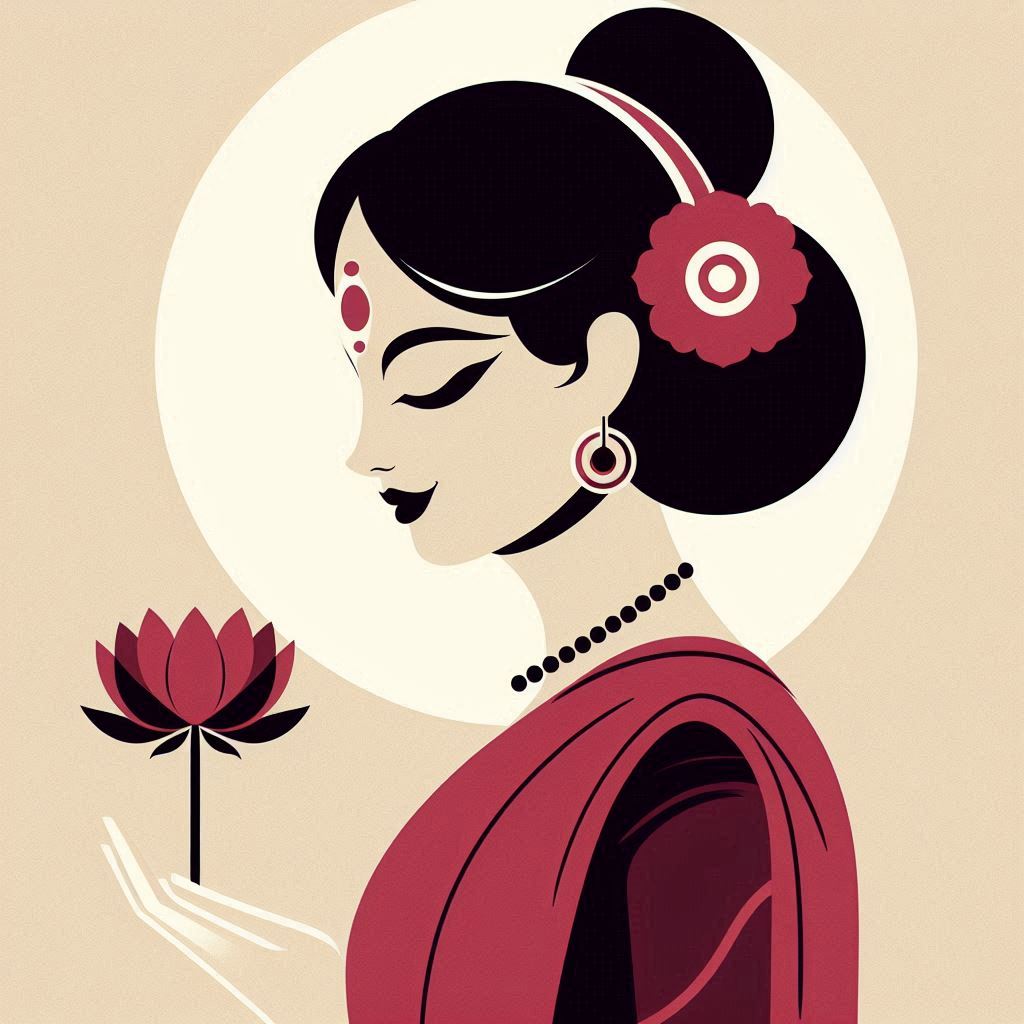
Sita: The Jewel of Mithila
Sita was no ordinary princess. Found as a baby in a furrow while King Janaka was plowing a field, she was believed to be a divine gift from Bhūmi, the Earth Goddess. Sita grew up in the lap of luxury but was also taught the virtues of humility, devotion, and compassion. Her beauty, wisdom, and grace made her the ideal bride, and her swayamvar was destined to attract the greatest of suitors.
“जनकसुताकरणनं भूभुजमण्डनमुत्तमम्।
रामाय विधिसंयुक्तं रामं पतिमवाप यत्॥”
Janakasutākaraṇanaṁ bhūbhujamaṇḍanamuttamam |
Rāmāya vidhisaṁyuktaṁ rāmaṁ patimavāpa yat ||
Translation: “Sita, the daughter of Janaka, became the most precious jewel of the royal house. By divine will, she chose Rama as her husband.”*
The Preparation for Sita’s Swayamvar
King Janaka knew that Sita’s swayamvar needed to be more than just a display of physical strength. He decided that the suitor who could lift and string Lord Shiva’s divine bow would be the one worthy of marrying his daughter. The bow, known as the Pinaka, was no ordinary weapon; it was a symbol of immense strength and divine power.
The Bow of Shiva: A Test of Strength and Virtue
The bow of Shiva was an ancient and powerful relic, guarded by King Janaka as a treasured possession. Many princes had come before to try and string the bow, but all had failed. The test of lifting and stringing the bow was not merely physical but also a spiritual one, requiring the suitor to possess both valor and virtue.
Rama and Lakshmana’s Arrival in Mithila
When Sage Vishwamitra, accompanied by the young princes Rama and Lakshmana, arrived in Mithila, the kingdom buzzed with anticipation. Although many had heard of Rama’s valor, none knew of his divine origins. Vishwamitra’s arrival at King Janaka’s court was seen as an auspicious sign, as he was a revered sage known for his wisdom and spiritual power.
The Royal Court of Mithila
The royal court of Mithila was adorned with splendor for Sita’s swayamvar. Kings and princes from distant lands gathered to win the hand of the princess. The court was filled with excitement and tension as they awaited the moment when each suitor would attempt to string Shiva’s bow.
Rama’s Divine Strength and Grace
When it was Rama’s turn to lift the bow, he approached it with calm and confidence. With the blessings of Sage Vishwamitra and the divine grace that surrounded him, Rama lifted the bow effortlessly and strung it with such force that the bow broke in two. The assembly was left in awe, and King Janaka, overjoyed, proclaimed Rama as the victor.
“श्रीनिवासो रघुश्रेष्ठो रामो भूभृतां वरः।
सीता पत्न्यं समापन्नः स्वर्धर्मेण महात्मना॥”
Śrīnivāso raghuśreṣṭho rāmo bhūbhṛtāṁ varaḥ |
Sītā patnyaṁ samāpannaḥ svardharmeṇa mahātmanā ||
Translation: “Rama, the greatest among the Raghu lineage, who upheld the earth, won Sita as his wife through his divine strength and dharma.”*
Sita’s Heartfelt Acceptance
As Rama broke the bow, Sita’s heart swelled with joy. She had always believed that her husband would be a man of great virtue and strength, and now that moment had come. With tears of happiness, she garlanded Rama, signifying her acceptance of him as her husband.
The Blessings of Mithila
The union of Rama and Sita was celebrated across Mithila. The people rejoiced, knowing that their princess had found a worthy partner. The marriage of Rama and Sita was not just the union of two individuals; it symbolized the joining of dharma (righteousness) and shakti (divine power). The people of Mithila showered the couple with blessings, knowing that their kingdom was part of a divine destiny that would unfold in the future. King Janaka, too, was overjoyed and felt a sense of fulfillment that his beloved daughter was married to a prince as virtuous as Rama.
The Cultural Richness of Mithila
Mithila, often hailed as a land of culture and art, played a crucial role in shaping the intellectual and spiritual landscape of ancient India. The kingdom was a center for scholars, sages, and artists who contributed significantly to the fields of philosophy, literature, and painting. The people of Mithila, including King Janaka, deeply appreciated the importance of learning, spiritual pursuits, and art.
The region is also famous for Madhubani painting, a unique style of art that reflects the deep cultural ethos of Mithila. These artistic expressions were not only aesthetic but often carried spiritual and philosophical themes, connecting the material with the divine.
The Role of Dharma in Sita’s Swayamvar
Dharma, or righteousness, played a key role in every aspect of Sita’s swayamvar. King Janaka, as a dharmic ruler, sought a husband for Sita who embodied the virtues of strength, integrity, and righteousness. His decision to test the suitors with the challenge of stringing Shiva’s bow was guided by his desire to uphold dharma in the process of choosing Sita’s husband.
Even the swayamvar itself was conducted in a manner that reflected the dharma of the time, ensuring that only the most worthy prince could win the hand of the divine Sita. Rama’s success in the swayamvar was not just a display of his physical prowess, but a testament to his adherence to dharma, which would be the foundation of his future rule as a righteous king.
The Blessings of Sage Vishwamitra
One of the most important figures in the swayamvar was Sage Vishwamitra, who had guided Rama and Lakshmana to Mithila. Vishwamitra was not only a great sage but also a spiritual guardian of the young princes. His blessings and guidance were instrumental in Rama’s success. His presence at the swayamvar added a layer of sanctity and spiritual significance to the event.
It was under his tutelage that Rama learned the use of divine weapons and gained the confidence needed to face challenges such as the swayamvar. In many ways, Vishwamitra’s mentorship was as important as Rama’s own strength in ensuring the success of this divine union.
Sita’s Divine Destiny
Sita’s swayamvar was more than just a royal event; it was a moment where divine destiny unfolded. From her miraculous birth to her marriage to Lord Rama, Sita was destined to play a key role in the larger narrative of the Ramayan. Her union with Rama symbolized the perfect harmony between the material and spiritual worlds.
In many ways, Sita represents the Earth itself, nurturing, giving, and enduring. Her marriage to Rama was a union of two cosmic forces, bringing balance and righteousness to the world. Sita’s life, much like the swayamvar, is intertwined with dharma, highlighting the importance of duty, sacrifice, and love.
Conclusion: The Kingdom of Mithila’s Eternal Legacy
Mithila’s significance extends beyond the swayamvar and into the cultural and spiritual fabric of ancient India. The kingdom’s emphasis on learning, art, and dharma left an indelible mark on the history of the subcontinent. Sita’s swayamvar, an event celebrated for its display of strength, virtue, and divine will, continues to inspire generations.
The legacy of Mithila lives on not just through the story of Sita and Rama but through the timeless values it upheld—wisdom, righteousness, and devotion. As a land that fostered these values, Mithila’s role in the Ramayan is one of profound importance, leaving behind a heritage that will forever be remembered.
Shlokas Related to Mithila and the Swayamvar
Here are some beautiful shlokas from the Ramayan and other texts that capture the essence of the swayamvar and the divine bond between Rama and Sita:
“रामो रामः सतां राजा सीताया पतिरुत्तमः।
धर्मेण विवहं श्रुत्वा राजा जनकसम्मतम्॥”
Rāmo rāmaḥ satāṁ rājā sītāyā patiruttamaḥ |
Dharmeṇa vivahaṁ śrutvā rājā janakasammatam ||
Translation: “Rama, the king of kings, became the worthy husband of Sita. Their marriage, rooted in dharma, was blessed by King Janaka and all the learned sages.”
“धनुर्भेदं कृत्वा रामो रामयावति जानकी।
सीता पत्न्यं समापन्ना धर्मेण महात्मना॥”
Dhanurbhedaṁ kṛtvā rāmo rāmayāvati jānaki |
Sītā patnyaṁ samāpannā dharmeṇa mahātmanā ||
Translation: “After breaking the great bow, Rama won the heart of Janaki (Sita), and their union was sealed with the blessing of dharma.”
“जनकनन्दिनी सीता पतिं लब्धा रघूत्तमम्।
धर्मार्थं जीवनं ते सत्यं राघवसंमतम्॥”
Janakanandinī sītā patiṁ labdhā raghūttamam |
Dharmārthaṁ jīvanaṁ te satyaṁ rāghavasaṁmatam ||
Translation: “Sita, the daughter of Janaka, was united with the greatest of the Raghu dynasty, and their lives became an embodiment of truth and righteousness.”
These shlokas emphasize the sacred bond between Rama and Sita and the dharma that governed their union, reflecting the spiritual depth of the swayamvar in Mithila.
FAQs
- What is the significance of Sita’s swayamvar?
Sita’s swayamvar was a divine event where Lord Rama proved his strength and virtue by stringing Lord Shiva’s bow, symbolizing their destined union and the beginning of a larger divine mission. - Why was Mithila known as a land of wisdom?
Mithila was a center for learning and philosophy. It was home to great sages and scholars, and its ruler, King Janaka, was a philosopher-king who valued wisdom and dharma. - Who was Sage Vishwamitra and what role did he play?
Sage Vishwamitra was a revered sage who guided Rama and Lakshmana to Mithila and played a crucial role in preparing Rama for the challenges ahead, including the swayamvar. - What was the significance of Lord Shiva’s bow in the swayamvar?
The bow of Shiva was a divine weapon, and lifting and stringing it required immense strength and divine grace. The challenge was set to ensure that Sita’s suitor was not only physically strong but also spiritually aligned with dharma. - How did Mithila contribute to the Ramayan?
Mithila was the birthplace and home of Sita, one of the central characters of the Ramayan. The kingdom’s emphasis on dharma, culture, and learning played a key role in shaping the narrative of the epic.


